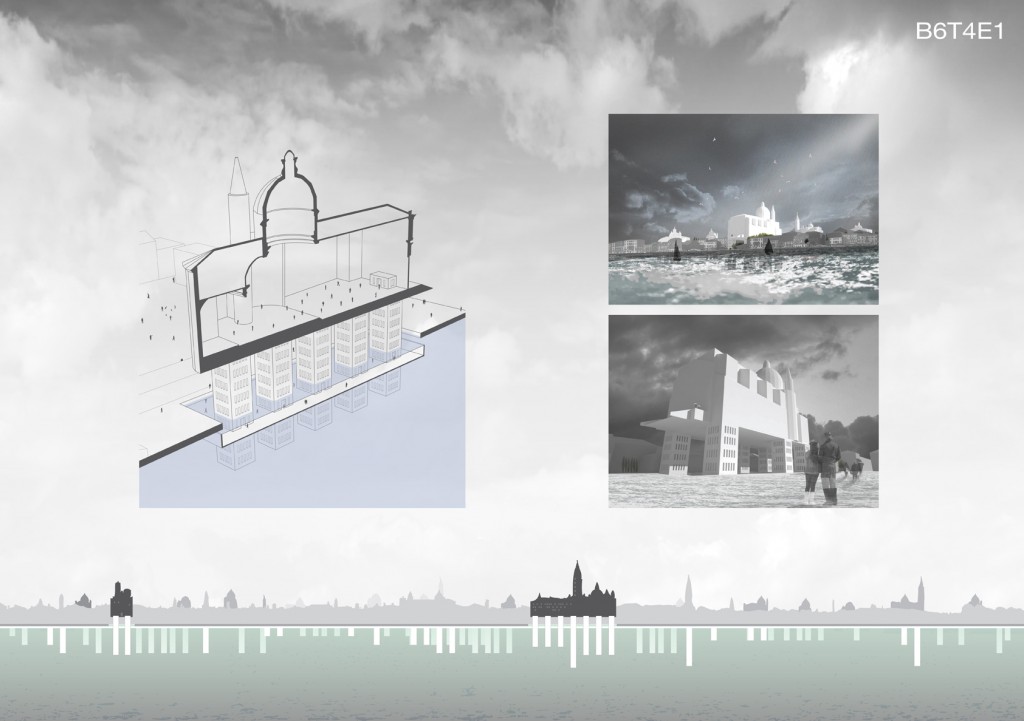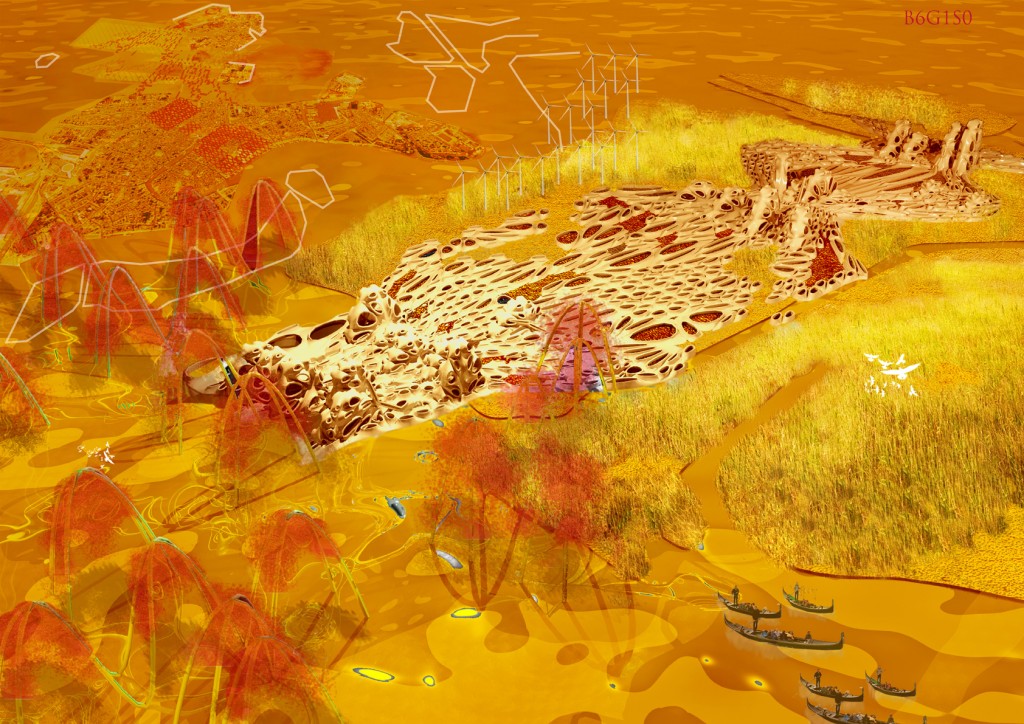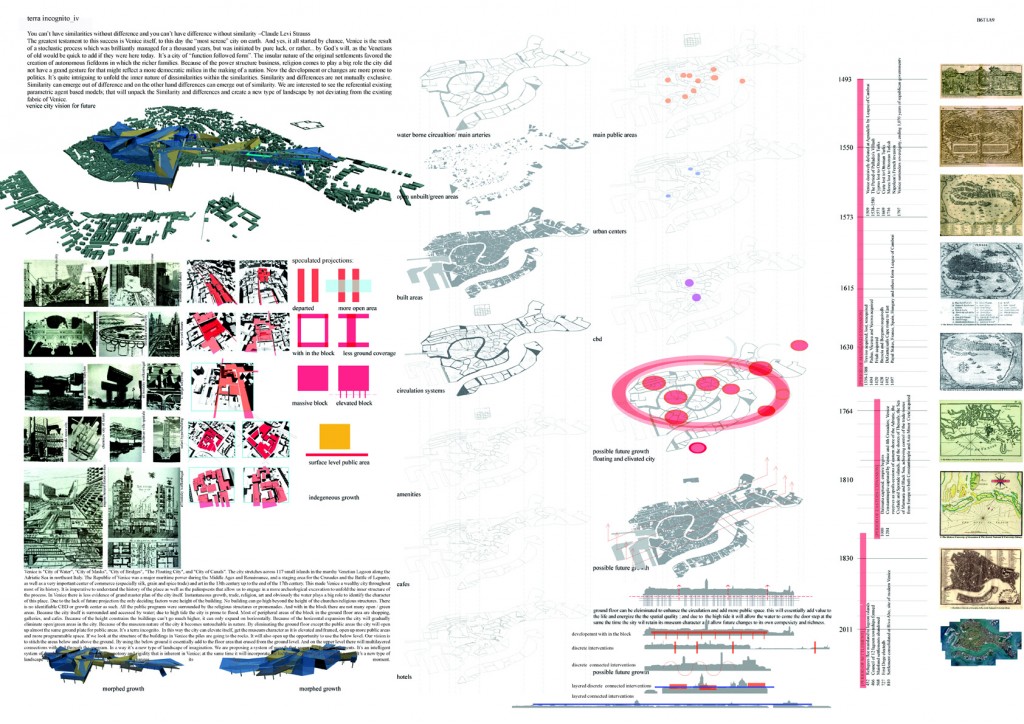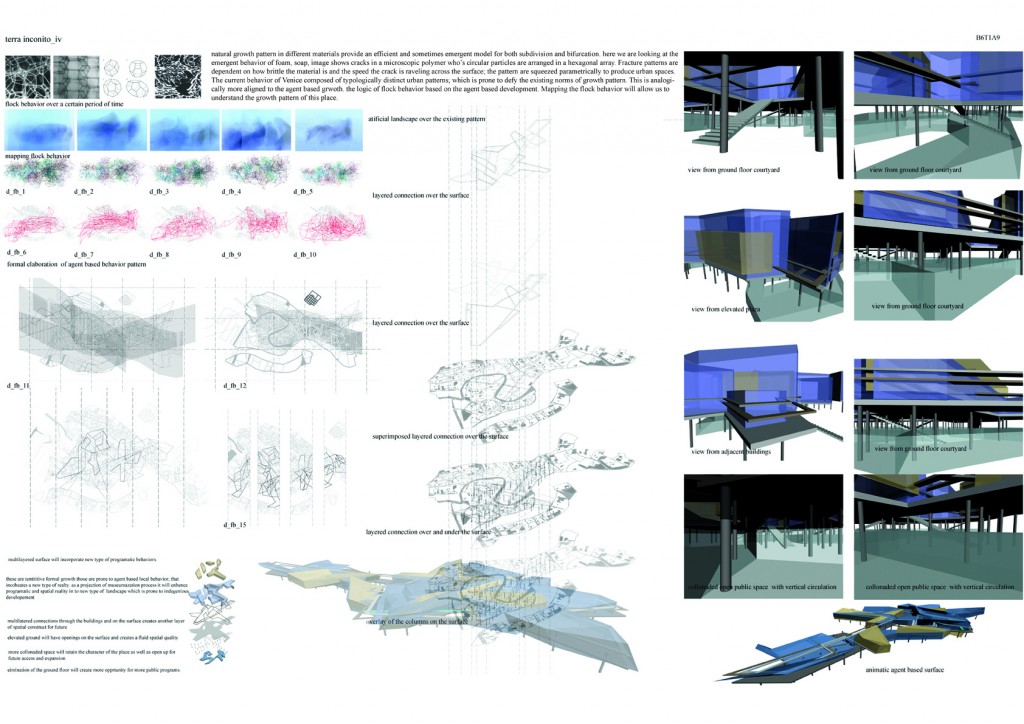Info:
Title: Terra incognito - Code: B6T1A9Contest: Venice / 2011
By: A. M. Hassan / J. Williams
Views: 2542 Likes: 0
Votes:
BJARKE INGELS4 NERI OXMAN6 ELENA MANFERDINI3 MARIA LUDOVICA TRAMONTIN5 BOSTJAN VUGA13.8
Terra incognito
Terra incognito_iv You can’t have similarities without difference and you can’t have difference without similarity –Claude Levi Strauss The greatest testament to this success is Venice itself, to this day the “most serene” city on earth. And yes, it all started by chance, Venice is the result of a stochastic process which was brilliantly managed for a thousand years, but was initiated by pure luck, or rather… by God’s will, as the Venetians of old would be quick to add if they were here today. It’s a city of “function followed form”. The insular nature of the original settlements favored the creation of autonomous fiefdoms in which the richer families. Because of the power structure business, religion comes to play a big role the city did not have a grand gesture for that might reflect a more democratic milieu in the making of a nation. Now the development or changes are more prone to politics.
It’s quite intriguing to unfold the inner nature of dissimilarities within the similarities. Similarity and differences are not mutually exclusive. Similarity can emerge out of difference and on the other hand differences can emerge out of similarity. We are interested to see the referential existing parametric agent based models; that will unpack the Similarity and differences and create a new type of landscape by not deviating from the existing fabric of Venice.
Venice is “City of Water”, “City of Masks”, “City of Bridges”, “The Floating City”, and “City of Canals”. The city stretches across 117 small islands in the marshy Venetian Lagoon along the Adriatic Sea in northeast Italy. The Republic of Venice was a major maritime power during the Middle Ages and Renaissance, and a staging area for the Crusades and the Battle of Lepanto, as well as a very important center of commerce (especially silk, grain and spice trade) and art in the 13th century up to the end of the 17th century. This made Venice a wealthy city throughout most of its history. It is imperative to understand the history of the place as well as the palimpsests that allow us to engage in a more archeological excavation to unfold the inner structure of the process. In Venice there is less evidence of grand master plan of the city itself. Instantaneous growth, trade, religion, art and obviously the water plays a big role to identify the character of this place. Due to the lack of future projection the only deciding factors were height of the building. No building can go high beyond the height of the churches/religious structures. There is no identifiable CBD or growth center as such. All the public programs were surrounded by the religious structures or promenades. And with in the block there are not many open / green areas. Because the city itself is surrounded and accessed by water; due to high tide the city is prone to flood. Most of peripheral areas of the block in the ground floor area are shopping, galleries, and cafes. Because of the height constrains the buildings can’t go much higher, it can only expand on horizontally. Because of the horizontal expansion the city will gradually eliminate open/green areas in the city. Because of the museum nature of the city it becomes untouchable in nature. By eliminating the ground floor except the public areas the city will open up almost the same ground plate for public areas. It’s a terra incognito. In this way the city can elevate itself, get the museum character as it is elevated and framed, open up more public areas and more programmable space. If we look at the structure of the buildings in Venice the piles are going to the rocks. It will also open up the opportunity to use the below level. Our vision is to stitch the areas below and above the ground. By using the below ground it essentially add to the floor area that erased from the ground level. And on the upper level there will multilayered connections with and through the program. In a way it’s a new type of landscape of imagination. We are proposing a system of growth that responded to the local agents. It’s an intelligent system of development that will allow the monotony and rigidity that is inherent in Venice; at the same time it will incorporate the local mise-en- scene to construct a new. It’s a new type of landscape which changes its face in every moment.
Info:
Title: Terra incognito
Time: 7 giugno 2011
Category: Venice
Views: 2542 Likes: 0
Tags: Adriatic Sea , Battle of Lepanto , City of Water , Middle Ages , Pittsburgh , Republic of Venice , Venetian Lagoon , Venice







